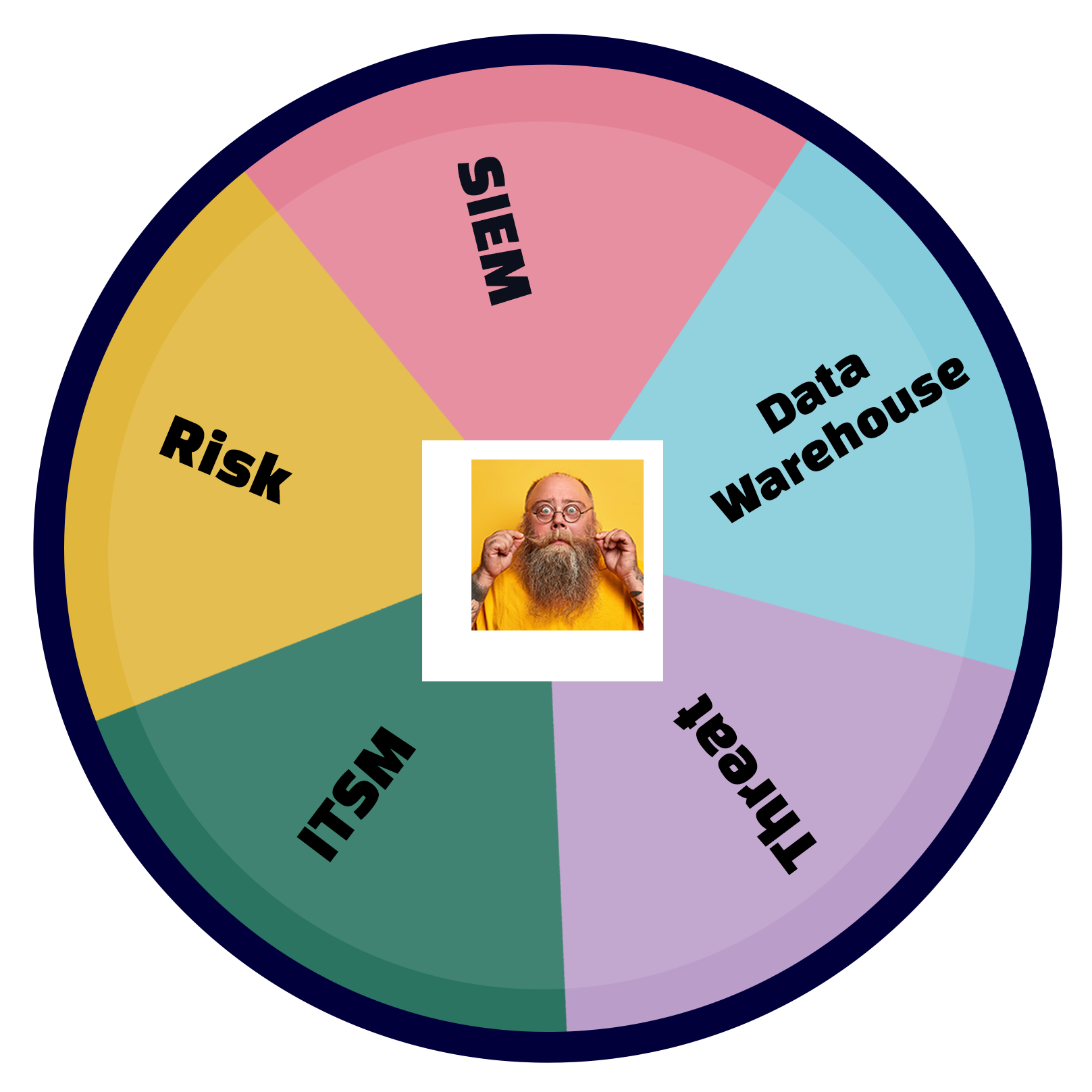As technology evolves, it becomes more embedded in our lives in a wider variety of ways. Cybersecurity threats, therefore, pose a larger menace. They could potentially affect more aspects of life across larger networks of sensitive data.
Today’s cybersecurity threats are just as complex as the technologies they imperil, too. Methods of the past, like antivirus software or firewalls, are no longer enough on their own. Modern organizations require a comprehensive strategy, reflective of their top priorities and evolved in real time according to the situation of the day.
Because of the risks posed to everyday aspects of life by threat actors, cybersecurity has become a foundational component built into (or alongside) the technology businesses offer. Just like a vehicle manufacturer wouldn’t sell a car without seatbelts or windows, a company wouldn’t dare to launch a website or an app without a plan for protection.
Protecting your business in this day and age, therefore, means understanding the importance of cybersecurity and why it is a crucial component of building value through digital experiences.
What Is Digital Security?
Cybersecurity as a concept involves many disciplines and practices, meaning there is no one definition accepted across all industries. Most broadly, it encompasses all processes and technologies used to prevent, detect, and respond to attacks against digital data, devices, applications, and systems.
CISA Definition of Cybersecurity
The U.S. Cybersecurity & Infrastructure Security Agency (CISA) defines cybersecurity as “the art of protecting networks, devices, and data from unauthorized access or criminal use and the practice of ensuring confidentiality, integrity, and availability of information.”
Gartner Definition of Cybersecurity
Per Gartner: “Cybersecurity is the combination of people, policies, processes and technologies employed by an enterprise to protect its cyber assets. Cybersecurity is optimized to levels that business leaders define, balancing the resources required with usability/manageability and the amount of risk offset.”
IBM Definition of Cybersecurity
IBM states that “Cybersecurity is the practice of protecting critical systems and sensitive information from digital attacks. Also known as information technology (IT) security, cybersecurity measures are designed to combat threats against networked systems and applications, whether those threats originate from inside or outside of an organization.”
Lucidum Definition of Cybersecurity
Cybersecurity is the implementation of strategies designed to protect an organization’s prized digital assets: the proverbial “crown jewels.” It leverages technologies, processes, policies, and the talent of people in key organizational roles. Its primary goal: to continuously survey the organization’s attack surface, assess threats, mitigate risks, ensure compliance, and respond to compromises in real-time — all while informing the overall risk management strategy of the organization as a whole.
The Importance of Cybersecurity in the Digital World
To ensure the digital services you and your customers rely upon, cybersecurity must both be a component of your “tech stack” and your organizational policies. Consider that digital experiences have become melded within daily operations in our era of agile transformation.
Because digital strategies are so essential to not just the customer experience but the functionality of the business as a whole, it is vital to protect digital assets and data using the best resources and strategies available.
“Eighty-eight percent of boards regard cybersecurity as a business risk rather than solely a technical IT problem,” according to a recent Gartner survey.
Complex Service Delivery and Digital Operations Models Mean More Facets to Protect
Making matters more complicated, cloud and hybrid environments mean that threats are no longer just aimed at on-premises mainframes or isolated networks. An attack can affect any component of the entire tech ecosystem. They often penetrate perimeter security by wriggling through a back door towards sensitive data or proprietary secrets. For example: Vulnerabilities in the Google Cloud Platform meant that any company using their platform as a service (PaaS) or infrastructure as a service (IaaS) could have elements of their digital ecosystem compromised by weaknesses in code that could have led to hijacked accounts.
Businesses rely on hundreds (sometimes tens of thousands) of microservices and containerized processes, after all. Each is given permissions and at least partial access to their sensitive assets and data.
“The proliferation of services in this architecture creates more soft targets for hackers, crackers, and criminals,” observes one Cisco subsidiary. “With a variety of operating systems, frameworks, and languages to keep track of, the security group has their hands full making sure the system is not vulnerable.”
Rise in Remote Work Means an Expansion of Organizations’ Digital Footprints
As if all of these matters weren’t enough of a concern, the COVID-19 pandemic dramatically changed the way we work. Millions of people suddenly began working from home, meaning they had to rely on remote access to business networks. They also had to grant permissions to dozens of integrations from new productivity tools, almost always without any formal evaluation or procurement phase to speak of.
Remote work meant BYOD proliferated, too. Each device could potentially compromise the security “perimeter” — a concept that is becoming increasingly nebulous in our era of as-a-service offerings and hybrid architectures.
As digital operations balloon out from their physical confines and leap across devices through APIs, containers, microservices, and the cloud in general, having a comprehensive cybersecurity risk management strategy has become more essential…and more difficult.
Cybersecurity Threats Are on the Rise
The nature of cybersecurity threats has evolved in the past decade in the following ways.
Ever-Present Threats Strike Seemingly at Random
Isolated, targeted incidents that involved months of planning are now less common than the usage of botnets. These networks of remotely operated virtual machines (VMs) algorithmically explore every facet of organizations’ attack surfaces, probing for vulnerabilities. Any discoveries are further pursued, exposing any and all opportunities to extract sensitive information or further infiltrate deeper into the network.
Employees Are Targeted via Phishing and Subtle Social Engineering
Phishing emails and messages are sent out en masse by a combination of robotic processes and good old-fashioned con artists. Humans are often the weak link in the cybersecurity fence. According to a 2022 study by Verizon, as many as 82% of cybersecurity incidents are triggered as a result of human elements.
Ransomware Inflicts Economic Damage
The ability to inflict damage and extract money from targeted organizations has also intensified. Ransomware and terrorist-like hacking incidents are becoming more common. 53% of cyber attacks from 2016–2017 involved criminals holding digital systems hostage for a ransom worth $500,000 or more, per Cisco.
National Interests Driving Rise in Attacks
Ransomware attacks often stem from well-funded groups, sometimes backed by nation states. Nation-states know to attack vulnerable infrastructure and supply chains, not just extracting a ransom but also furthering that country’s national interests.
More Hacking Tools Than Ever
Most vexing of all, anyone who has a passing interest in becoming a threat actor now has a slew of options available to get started cheaply and with minimal knowledge. Plug-and-play kits open the cybercrime market for people interested in hacking, making it a hobby for “script kiddies” as well as those looking to earn side income through black hat and gray hat exploits. DIY hacking tools are available in the form of scripts, automated agents, and access to your very own botnets.
Further, DIY hacking tools like jailbroken devices can lead to serious breaches of vulnerable apps, networks, or systems with minimal effort.
Heightened Threats Risk Higher Amounts of Capital
Cumulatively, the risks of infiltration and the costs of cybersecurity incidents have risen astronomically.
The Astronomical Impact of Cybercrime
There are four main types of damages inflicted in the wake of a cybersecurity incident:
- Significant & direct financial disruption
- Lost productivity among customers, employees, and partners
- Reputational brand damage
- Costs of noncompliance and regulatory violations
Financial Damage
According to IBM’s annual cost of a data breach report, the average cost of a data breach increased 2.6% in just the past year, going from $4.24 million in 2021 to $4.35 million in 2022. That number has climbed 12.7% overall since 2020’s average of $3.86 million.
Different architectures carry different loss exposure potentials, too. Breaches that affected public clouds cost an average of $5.02 million, compared to private clouds at $4.24 million and hybrid clouds, which were the lowest at $3.8 million. In any configuration, these costs are astronomical and can have dramatic effects on the long and short-term goals of an organization.
The biggest difference, though, according to IBM was whether or not AI was employed in the cybersecurity strategic model. “Security artificial intelligence (AI), when fully deployed, provided the biggest cost mitigation,” says IBM, “with the average breach costing up to USD 3.05 million less at organizations with it than organizations without it.”
Lost Productivity
Damages have now become harder to fully calculate in our era of remote work and cloud-based services. Unplanned downtime can mean employees lose the ability to work, delaying progress and leading to languishing human resources.
As a net result of lost business opportunities and lost productivity, there’s an estimated loss of $5,600 – $9,000 per minute of downtime for a typical organization, according to Atlassian.
Customers may also be impacted, which could lead to violations of Service Level Agreements (SLAs) for their vendor partners and potentially even breach of contract issues. At the very least, customers are more likely to mistrust digital service providers that cost them money-making opportunities in any capacity.
Tarnished Reputation
Long-term effects of incidents are more difficult to quantify, but they certainly have an impact. A Forbes Insight study conducted in partnership with IBM found that “46% of organizations had suffered reputational damage as a result of a data breach and 19% of organizations suffered reputation and brand damage as a result of a third-party security breach.”
Consumer trust is often damaged and difficult to repair: people do not want to do business with a company that has been breached, especially if personal or financial data was involved.
As a result, cybersecurity experts like Jane Franklin caution that “Organizations must protect their corporate reputation as an increasing importance is being placed on business ethics and governance. Furthermore, consumers, investors, partners, employees and shareholders are holding organizations accountable for their actions. Corporate reputation matters.”
Compliance & Regulations
Non-compliance can inflict significant costs on businesses unprepared to manage and mitigate cybersecurity threats. Most notably, regulations on data privacy and protection have a prolific effect on corporate policies and their requirements for compliance. There are even more stringent considerations for companies in finance, healthcare, manufacturing and other heavily regulated fields.
Companies that fail to comply with data regulations incur an average cost of $14.82 million over a 12-month period. Because of these risks, and the fact that Gartner and other companies predict that regulations will tighten even more over the next two years, cybersecurity leaders are advised to consider strategic planning around their data practices at all levels.
Organizations must also increasingly comply with SLAs and vendor/partner contracts. Companies are predicted to increasingly demonstrate due diligence, which can involve something as simple as demonstrating ongoing monitoring to something as complex as requisite cybersecurity and data audits pending a large merger or acquisition.
Gartner even predicts that evaluations for executive performance could become increasingly tied to the organization’s ability to manage cybersecurity risks. “Most security and risk leaders now recognize that major disruption is only one crisis away,” they reveal in their recent two-year trend outlook report. “We can’t control it, but we can evolve our thinking, our philosophy, our program and our architecture.”
5 Benefits of Using Cybersecurity
With above concerns and considerations in mind, there are several primary benefits for companies to incorporate cybersecurity as a major branch of their operations:
Reduce Risk of Financial Loss and Brand Damage
Cyber attacks only continue to grow more sophisticated and complex every day; it’s important to weigh the cost of dealing with one attack versus the value of taking preventative measures.
By mitigating risks, you put your business in a better position to respond, recover, and keep existing customers happy — a far more cost-efficient option than attracting new ones, not to mention a boon for valuation and longevity of the company as a whole.
Protect Data & Assets
Data is increasingly valuable currency, not just because compromising it can mean non-compliance fines.
Corporate data theft is a growing industry: between ransomware attacks and a growing trend of internal data theft, data must be protected.
Assets are also valuable investments integral to the operations and customer experience of an enterprise. Any incident threatens to compromise those investments and disrupt business plans.
Improve Customer Confidence
Customer retention is a critical aspect of business growth. Having a reputation for strong cybersecurity — and a lack of slip-ups in your track record — can be a key differentiator. It’s also “the shortest path to repeat business, recommendations, and higher per-ticket purchases,” according to an established provider of professional services for public accountants.
Ensure Compliance With Government Rules and Partner Agreements
Non-compliance is costly, and it could cost your entire business after a major incident. Further, partners risk their reputation when they rely on service providers, vendors, suppliers, etc. to maintain cybersecurity integrity
Take Advantage of Evolving Tech in the Face of Evolving Threats
Technology introduces exciting opportunities, but also expanding risks. The proliferation of cloud, APIs, and microservices promises more convenience for employees and customers. At the same time, it also introduces new potential risks.
In order for technology to provide the value its intended to, cybersecurity must be a top priority at all stages of corporate strategy.
Keep Tabs on Your Entire Attack Surface to Protect What Matters Most
Given current and past trends, it’s a foregone conclusion that threats will continue to evolve and become more costly.
Lucidum provides a key component of risk mitigation: Attack Surface Management (ASM). From a single platform, you can discover assets, monitor data/asset safety, address vulnerabilities, mitigate risks, and respond in real-time through best-of-breed tool integrations.
Reveal, monitor, and learn across every square inch of your attack surface, all from one place.
Discover how Lucidum can protect what matters most — including what normally lies outside the radar — by visiting our attack surface management platform page or reaching out to schedule a demo today.
Learn more about the main steps you need to take to protect your digital operations and your most important assets from cybersecurity risks. Read “What You Can Do Today to Make an Impact on Cybersecurity Asset Management“









